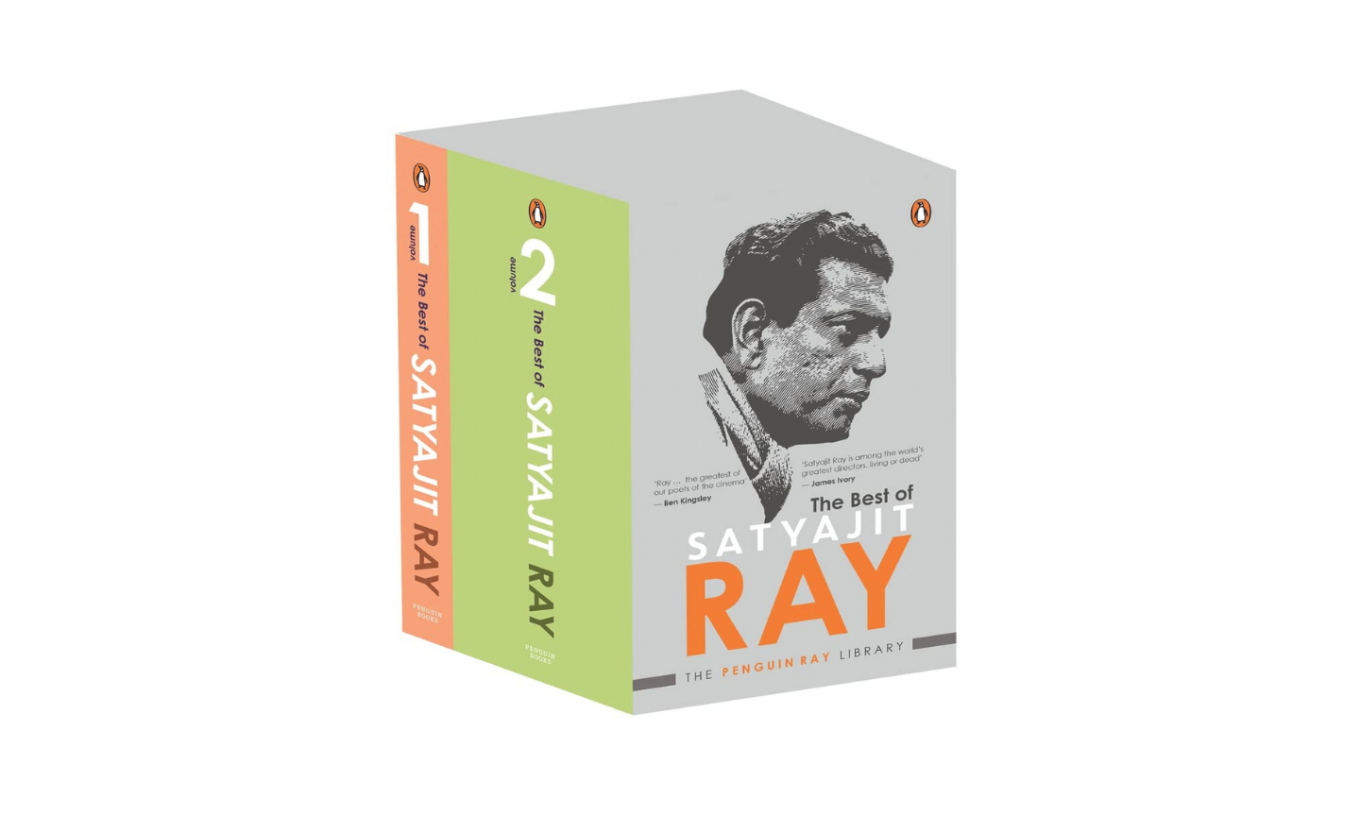Title: The Best of Satyajit Ray
Author: Satyajit Ray
Publisher: The Penguin Library
Year of Publication: 2023
Much like Tagore, Satyajit Ray is an unavoidable name in most Bengali households. But even within that framework there are many who would associate Ray more as a film maker than a writer and as a result missed out on reading him.
Holding the Penguin Ray Library in my hands- a two volume tome that claims to have the best of Satyajit Ray, it is somewhat difficult not to be overwhelmed by the master and his writing prowess on display here. As a writer, Ray overwhelms you as much for the volume of his output as for the range that he flaunts. For starters, you often wonder how a man who was a full-time film maker, found the time and the mind set to write so much!
For most of us, familiar with Ray’s writing, this collection might hold a few surprises. Not only does the anthology house Ray’s famous Feluda and Professor Shonku stories, but it also combines various other kinds of writing amongst which are short stories belonging to genres ranging from Sci-Fi, horror, comic, and mystery. Other than this, rare essays written by Ray, most of which are about cinema or about his own work also find space here.
As anyone familiar with Ray’s writing will know, his short stories are a fascinating read. Primarily written for Bengali children’s magazines, and targeted towards children and young adults, the bulk of them deal with the mystery stories, science fiction and strange little tales, set in the regular ambience that most Bengalis are already familiar with. Ray’s simple and straightforward diction is deceptive in the kind of details it covers. In fact, one realises why he was probably such a good script writer too, while reading these stories. In an interview to The Academy of Motion Pictures, Soumitra Chatterjee had once revealed how Ray interacted with his child artistes. ‘To him children were never different from adults, and each question that they had for him was given importance, listened to carefully and replied with tremendous patience. In fact, we would sometimes be amazed at his patience while answering the many queries he fielded from these child actors.’ Reading Ray’s stories which were directed mostly at young adults, the veracity of this statement is well realised. Peppered with vivid details, humour and little complexities of life, these stories have the ease of familiarity while often introducing us to an unexpected ending or an innocent surprise. ‘Big Bill’, ‘Bhuto’, ‘Stranger’, ‘The Pterodactyl’s Egg’, ‘Patol Babu’, Film Star’ and ‘The Hungry Septopus’, ‘Indigo’ ‘Danger in Darjeeling’ are some old favourites and hugely interesting stories that every reader irrespective of age will enjoy here.
For most Bengalis, the stories are set in familiar surroundings of small-town Bengal, the city of Kolkata, the hills of Chota Nagpur or areas Bengalis often frequented during holidays. This is uniquely Ray of course, for he does the same in his films too, which are invariably set in his familiar haunts of either the city of Kolkata or small-town Bengal. But just like his films, audiences, and readers from all over the world find a strange old-world charm and relatability in these stories that mostly surround the everyday lives of regular Bengalis. Ray’s writing breathes life into his characters, bringing back a more simplistic era of surprise and wonder.
While on the topic of the essays, it must be said here, that readers of non-fiction writing will especially enjoy his essays the most. The anthology carries fourteen essays, and showcases not only Ray as the film maker, but the critic and the humanist that he was too. The essays themselves range from films he made, to discussions on foreign films, comparisons between our films and films from Russia, France, or the United States. From talking about the history of cinema to the great directors of the past, and anecdotes during film making- this is quite a range on display. There are some delightful and moving personal profiles that he draws through some of these essays too- Chunnibala Devi, the old pishi in Pather Panchali or Benode Bihari the blind painter, whom Ray admired. ‘On Charulata’ is a brilliant take on cinematic adaptation from books, as a mildly irritated Ray takes on a critic, Mr. Rudra for his unnecessary comments while comparing Tagore’s rendition of Nashtaneer to his own. What follows is a line-by-line detailed dissemination of the most articulate kind. Mr. Rudra is educated on why a novel is different from a script, and why, what might be often possible in a novel, need not find the same flight in a film. The essay ends up being, a master class on how to write a script, with various examples of nuances that are used in the adaptation from a book.
The articulation of Ray, the quirkiness of his short stories and lucidness of Gopa Majumdar’s translation of many of the works included here, should be reason enough for this to be a collector’s item.





